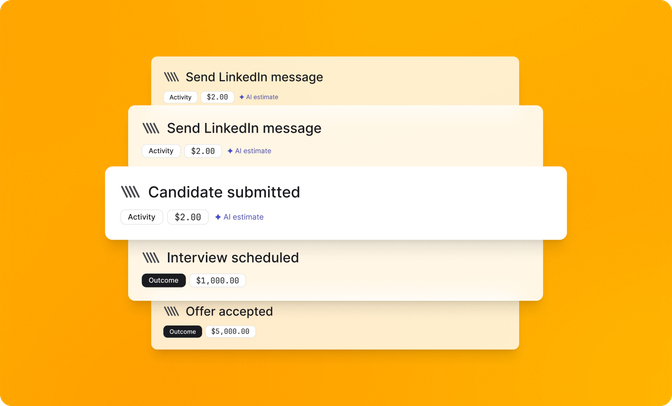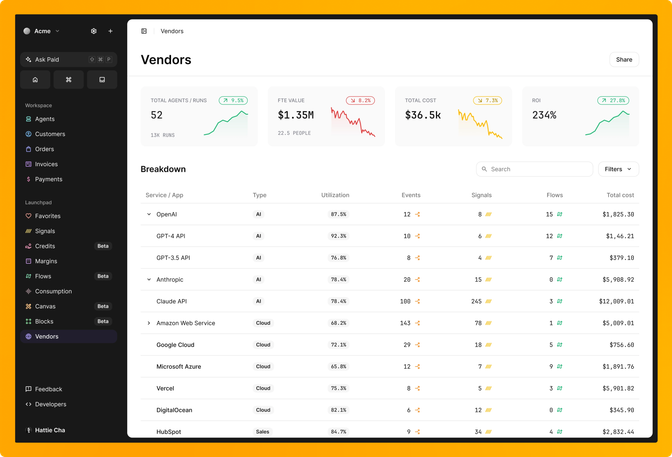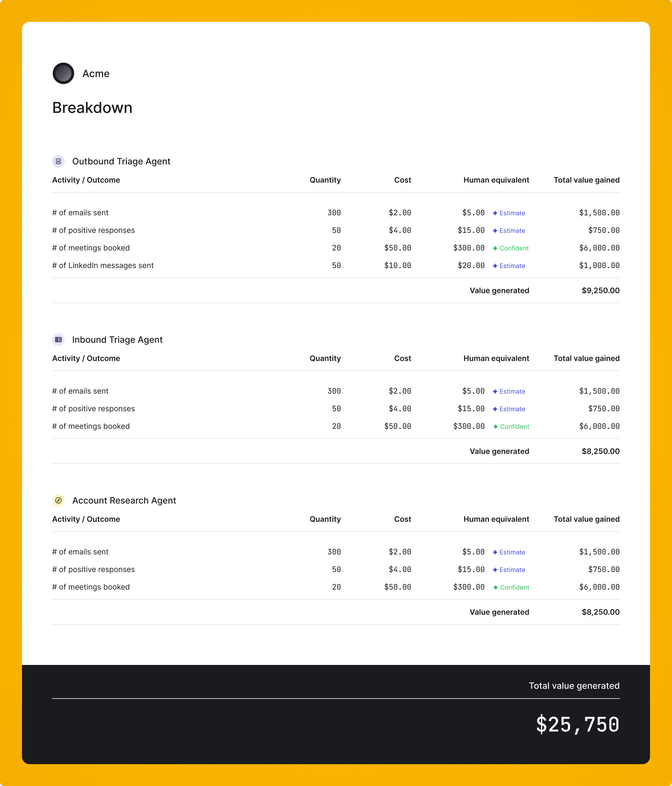Build agents, get paid
Understand your margins and get paid for the value your agents create.



After over 250 conversations with AI companies and reviewing production deployments at OpenAI, Sierra AI, Fin.ai, and others, one pattern is clear: retrofit SaaS billing doesn’t work for AI agents.
Here are 10 features that AI billing platforms need.
Traditional platforms offer "per-seat" or "usage-based" - but AI agents need four different models - which matches the value they deliver:
The mix of hybrid models where base subscription plus outcome fees can create sustainable unit economics.
Tokens are implementation details, but customers care about business outcomes.
Track what matters to your business:
Traditional metering platforms like Metronome and Orb force you to predefine metrics. Seats and API calls made sense for SaaS. Agents need something smarter.
We believe in the crystal ball effect: Your agent runtime reveals patterns you never thought to measure. Which workflows drive retention? Which API calls predict churn? Which customer behaviors signal expansion opportunities?

await paidClient.initializeTracing();
const paidOpenAiWrapper = new PaidOpenAI(openaiClient);
await paidClient.trace("<external_customer_id>", async () => {
return await agent.processCustomerRequest(paidOpenAiWrapper);
}, "<optional_agent_id>");
Your comparison should be with SaaS billing where you need to make specific function calls to translate business into tokens. In agent billing, the business signals are the billing units.
Most AI companies know revenue but not costs until the OpenAI or Anthropic bill arrives. That’s too late.
Essential margin capabilities an agentic billing system needs:
When a customer's agent switches from GPT-4o to GPT-5, your margins can crater. You need to know in minutes, not at the end of the month.
Modern agents use multiple providers:

AI billing needs to help you track your costs across vendors and updates rates automatically. You can’t know what your agent’s profitability is if you can’t reconcile the separate bills.
When three agents collaborate to book a meeting, who gets credit?
Billing must support workflow-level attribution with configurable revenue-split rules.
Not all outputs are equal. A 95% accurate document analysis delivers more value than 70%.
An AI-native billing system can adjust pricing based on performance multipliers where the system calculates performance scores and adjusts pricing automatically.
Billing platforms should support:
AI workloads spike unpredictably (meaning, Monday morning backlogs can drive 50x cost jumps).
Essential controls you will need:
Even OpenAI shifted to prepaid credits to manage this risk.
Customers need to justify agent ROI to their CFO. Traditional billing shows costs. AI billing should show value created.
Automatic reports show:

Example: “Agents processed 2,847 tickets, saving 712 hours at $2.15 each vs. $45 for human resolution.”
Your "Document Analysis Agent" might save Enterprise Corp $50,000/month but only $500/month for a small law firm. Why should they pay the same?
Same agent, different pricing:
AI billing ties price to customer value, not uniform features.
We know SaaS companies can’t rip out billing. Agent-native platforms must:
Result: predictable SaaS revenue stays on current rails, while variable agent value layers in seamlessly.
75% of AI companies struggle with billing because they’re forcing human-era tools onto agent-native problems. If you’re building agents, think of this now!
Yes, you can reinvent the wheel or use a platform built for the agentic economy. Every day of delay compounds how difficult it’ll be to replace.
Paid is the only billing platform built specifically for AI agents. Track costs, measure outcomes, and bill flexibly with simple integration.
Understand your margins and get paid for the value your agents create.




Price smarter. Protect margins. Grow revenue.